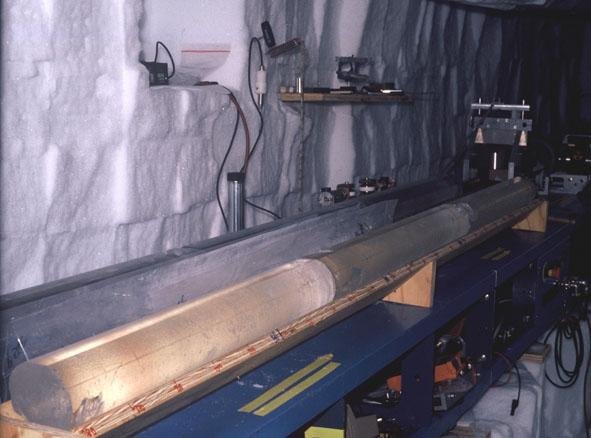Precipitation mechanisms at Antarctic deep drilling sites

For a correct paleoclimatologic interpretation of stable water isotopes from ice cores both pre- and post-depositional processes and their role for isotope fractionation have to be better understood. The project focusses on “pre-depositional processes”, namely the atmospheric processes that determine moisture transport and precipitation formation.
At the deep ice core drilling site "Dome C", East Antarctica, fresh snow samples have been taken since 2006. These samples have been analysed crystallographically, which enables us to clearly distinguish between blowing snow, diamond dust, and "synoptic precipitation". Also the stable oxygen/hydrogen isotope ratios of the snow samples were measured, including measurements of 17-O. This is the first and only multi-year fresh-snow data series from an Antarctic deep drilling site.
The Antarctic Mesoscale Prediction System (AMPS) employs Polar WRF for aviation weather forecasts in Antarctica. The data are archived and can be used for scientific purposes. The mesoscale atmospheric model was adapted especially for polar regions. The horizontal resolution for the domain that covers the Antarctic continent is 10 km.
Precipitation at Dome C is temporally dominated by diamond dust. However, comparatively large amounts of precipitation are observed during several “high-precipitation” events per year, caused by synoptic activity in the circumpolar trough and related advection of relatively warm and moist air from lower latitudes to the interior of Antarctica. AMPS archive data are used to investigate the synoptic situations that lead to “high-precipitation” events at Dome C; in particular, possible moisture sources are determined using back-trajectories. With this meteorological information, the isotope ratios are calculated using two different isotope models, the Mixed Cloud Isotope Model, a simple Rayleigh-type model, and the LMDZ-iso (Laboratoire de Météorologie Dynamic Zoom), a General Circulation Model (GCM) with implementation of stable isotopes. The results are compared to the measured stable isotope ratios of the fresh snow samples.

The project is carried out in cooperation with NCAR (National Center for Atmospheric Research), Boulder, CO, USA, LSCE (Laboratoire des Sciences du Climat et de l’Environnement), Gif-sur-Yvette, France, and the University of Triest, Italy.
Project
Project Leader:
Elisabeth SCHLOSSER
External Members:
Anna DITTMANN, B.Sc.
Funding Agencies:
Austrian Science Fund (FWF) P24223
Project Duration:
01/03/2012 to 31/03/2016
